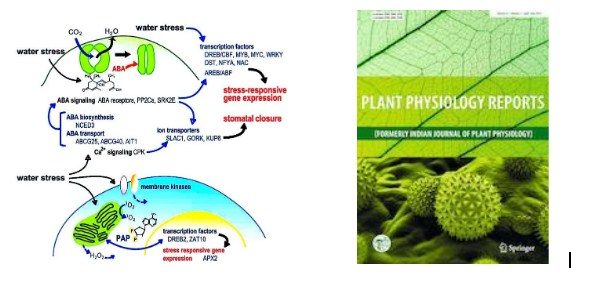Does it matter to know how freely water vapor can pass through the leaves – stomatal conductance-?

Dr. A. Chakhchar, Cadi Ayyad University, Marrakech, Morocco and 8 other scientists published a study on drought-tolerant Argan trees.
Climate change is a fact, and endangers all and everything. Endemic plants and trees: what’s their future? In August 2019 a publication on climate change and Argan trees, by Dr. Said Moukrim, Dr. Mouhssine Rhazi et al. was published. In addition, this new study by Chakhchar et al presents a focus on four different Argan ecotypes and drought-tolerant traits. Read about a study: “Physiological and carbohydrate metabolism traits for discrimination of drought-tolerant elite ecotypes of Argania Spinosa.”
Here’s the abstract:
Argan (Argania Spinosa) tree is a horticultural-forestry species characterized by its endemicity and its adaptive behavior to arid and semi-arid environments in the southwest of Morocco. It plays meaningful ecological, economic and social roles. Argan oil has high nutritional and dietetic values; it is thought to be one of the vegetable oils with the highest quality in the world. To characterize and to identify the most drought-tolerant ecotypes of the Argan tree, we focused our work on certain drought tolerance traits by studying the change in stomatal conductance (gs), Rubisco activity, carbohydrate compounds and enzymes in four different Argan ecotypes. These Argan ecotypes were grown under drought stress for 2 months. Under severe drought conditions, we recorded a significant reduction in gs and Rubisco activity, the largest decrease was noted in both contrasting coastal ecotypes. However, drought stress significantly increased the hexoses concentration in stressed plant leaves indicating stimulation of the activity of carbohydrate metabolizing enzymes. The correlations obtained suggest that related enzymes of primary carbohydrate metabolism have highly important effects on foliar hexoses concentration in Argania Spinosa during drought stress. Based on canonical discriminant analysis, both contrasting coastal ecotypes were distinctly separated from both contrasting inland ecotypes by the traits showing the high discriminatory potential: Rubisco, aldose 6-phosphate reductase, glucose-6-phosphate dehydrogenase and gs. These traits can be efficiently exploited to identify superior ecotypes suitable for drought conditions. Inland ecotypes appear to be more drought tolerant and interesting for the regeneration of Argan tree in dryland areas.
